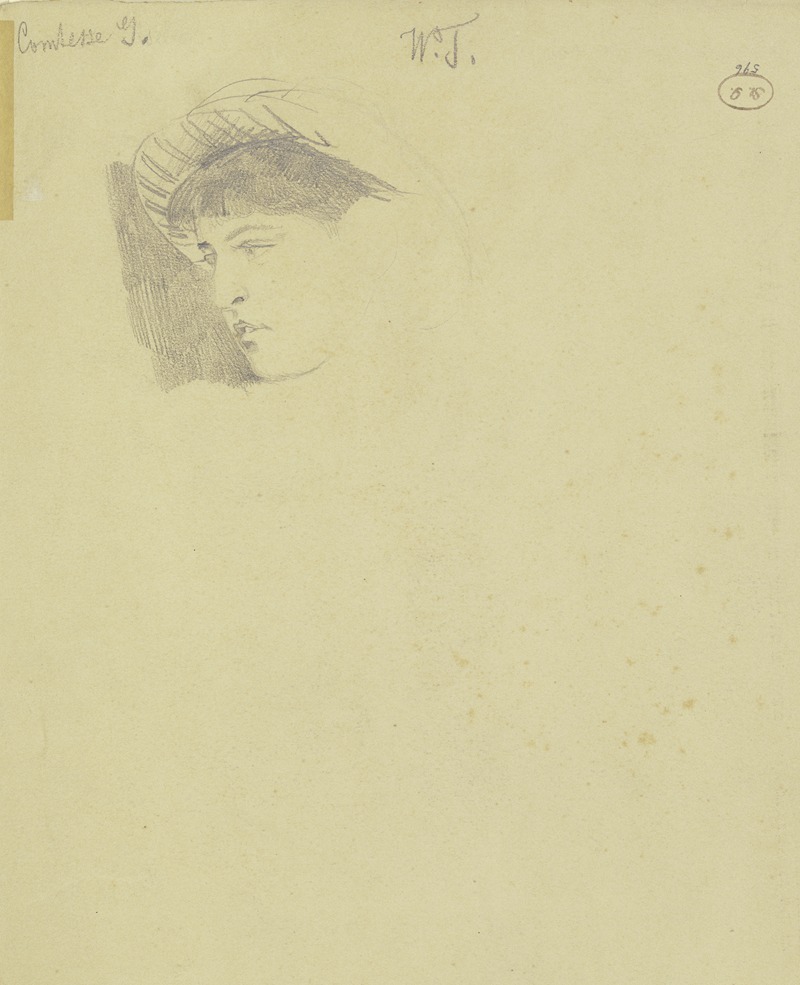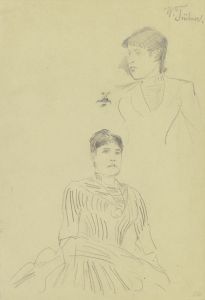
Portrait of Countess G.
A hand-painted replica of Wilhelm Trübner’s masterpiece Portrait of Countess G., meticulously crafted by professional artists to capture the true essence of the original. Each piece is created with museum-quality canvas and rare mineral pigments, carefully painted by experienced artists with delicate brushstrokes and rich, layered colors to perfectly recreate the texture of the original artwork. Unlike machine-printed reproductions, this hand-painted version brings the painting to life, infused with the artist’s emotions and skill in every stroke. Whether for personal collection or home decoration, it instantly elevates the artistic atmosphere of any space.
Wilhelm Trübner was a prominent German painter associated with the Realist movement, known for his keen attention to detail and his ability to capture the essence of his subjects. One of his notable works is the "Portrait of Countess G.," which exemplifies his skill in portraiture and his dedication to realism.
Wilhelm Trübner was born on February 3, 1851, in Heidelberg, Germany. He initially studied under the guidance of artists such as August von Kreling and Wilhelm von Diez, which helped him develop a strong foundation in the arts. Trübner was part of the Munich School, a group of artists who were influential in the late 19th century, known for their realistic style and emphasis on capturing the natural world with precision.
The "Portrait of Countess G." is a testament to Trübner's mastery in portraying the human figure with lifelike accuracy. While specific details about the identity of Countess G. are not widely documented, the painting itself speaks volumes about Trübner's approach to portraiture. The artwork is characterized by its meticulous attention to detail, from the texture of the Countess's clothing to the subtle expressions on her face. Trübner's use of light and shadow adds depth to the portrait, highlighting his ability to bring out the personality and status of his subject.
Trübner's style was heavily influenced by the Realist movement, which sought to depict subjects as they were, without idealization. This approach is evident in the "Portrait of Countess G.," where Trübner focuses on capturing the true essence of the Countess, rather than embellishing her features. His work often reflects a deep understanding of his subjects, portraying them with dignity and respect.
Throughout his career, Trübner was known for his ability to blend traditional techniques with a modern sensibility. His portraits often feature a harmonious balance between detail and composition, creating a sense of realism that draws viewers into the world of his subjects. The "Portrait of Countess G." is no exception, showcasing Trübner's talent for creating lifelike representations that resonate with viewers.
Trübner's contributions to the art world extend beyond his individual works. He was an influential figure in the development of German art during his time, and his works continue to be studied and appreciated for their technical skill and artistic merit. His dedication to realism and his ability to capture the human spirit in his portraits have left a lasting impact on the art community.
In summary, the "Portrait of Countess G." by Wilhelm Trübner is a significant example of 19th-century German portraiture. It reflects Trübner's commitment to realism and his skill in capturing the essence of his subjects. While specific details about Countess G. remain limited, the painting itself stands as a testament to Trübner's artistic prowess and his contribution to the Realist movement.


















